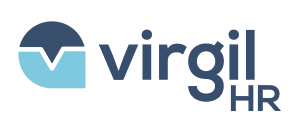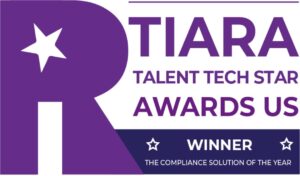Compliance audits are an important exercise in most organizations. A non-compliance event can cost organizations up to $4 million in revenue.
HR Compliance audits are not bullet-proof solutions to ensuring compliance for HR teams. However, they reduce the risk of a business falling into the wrong side of the law and paying hefty fines.
To conduct a proper compliance audit, you need to choose a competent auditor, perform initial planning, evaluate existing processes and controls, and consider any external resources for the audit.
Here’s what you need to know about compliance audits and how to conduct one properly.
What is a Compliance Audit?
A compliance audit is an independent evaluation that ensures an organization follows internal guidelines such as corporate controls, bylaws, external rules, laws, regulations, and policies or procedures.
Compliance audits also help determine if an organization conforms to various agreements, such as when a business accepts funding from the government or other sources.
A compliance audit report covers the strength of security policies, compliance preparations, user access controls, and risk management. Therefore, it will assess whether an organization works to a basic required standard.
A compliance audit report will also help HR teams fill in any HR compliance gaps, with recommendations on resolving potential issues.
What’s the Purpose of an HR Compliance Audit?
An organization can conduct different types of audits to assess how well they adhere to internal bylaws, standards, rules and regulations, and codes of conduct. They include the following:
- Internal audits
- Compliance audits
- Operational audits
Compliance audits are mostly outward-facing, ensuring the company complies with codes of conduct and regulations. Internal and compliance audits share similar language and software, making the reviews and reports holistic.
What is the Importance of Compliance Audits?
Within an HR team, compliance audits help organizations do the following:
- Identify potential HR risks and problems before they balloon into serious issues
- Keep track of employee performance
- Ensure employees are following proper safety protocols
- Determine if there are any regulatory violations
- Evaluate new HR processes and systems
- Investigate possible fraud
- Identify weaknesses in employee security
- Check for legal breaches
- Check if the company is meeting its financial obligations
- Find out how well the business is doing
Conducting HR compliance audits annually helps identify early warning signs, weaknesses, and potential risks. However, ideally, compliance audits should be conducted twice yearly or quarterly to give HR teams and other relevant stakeholders enough time to take corrective actions.
What Are the Benefits of HR Compliance Audits?
Compliance audits benefit a company in the following ways:
- They ensure a safe working environment for employees by promoting a stress-free and secure environment
- They establish a good company reputation which helps it gain public trust and become a dominant name in the industry
- They help avoid penalties and any legal issues or consequences
- They ensure continuous business operations by avoiding disruptions or cessation of operations
How to Conduct an HR Compliance Audit
You need to take several steps to conduct a compliance audit effectively. They include the following:
Choose the Auditor
Compliance audits must be conducted by a competent auditor. This may be someone within your organization, such as a compliance officer or an external party.
External independent auditors are often the most preferred choice by organizations since they offer unbiased and thorough services. Moreover, they’re often in the know about the latest compliance changes, ensuring your organization is not caught off-guard by changing legislation.
Perform Initial Planning
Before auditing starts, you need to plan for the process sufficiently. This includes listing key questions the audit must answer, including what risks it will address, the outcome of previous compliance audits, and significant compliance changes that have occurred since the last audit.
You should also meet with the auditor and other key stakeholders in the business, such as managers, where you can outline the scope of the compliance audit, checklists, and guidelines.
Evaluate Existing Controls and Processes
A compliance auditor’s role involves assessing an organization’s tone and risk management culture, as well as evaluating and reporting the effectiveness of the management policy implementation. The compliance auditor will study internal controls, review employee performance, assess documents, and check compliance within individual departments such as the HR team.
For the HR team, the auditor may ask several questions regarding the payroll procedures, hiring and interview practices, the quality of the employee handbook, and whether or not the employee records are accurately filled out.
Assess Risks
The auditor can assess compliance risks from the questions asked to relevant departments and teams and the evaluation of existing processes and controls.
Some industries have volatile regulation that changes regularly, increasing the risks’ severity. For such industries, compliance audits take a proactive and risk-based approach, anticipating possible future opportunities and concerns and providing advice, assurance, and insight where needed.
A competent compliance auditor will be well-versed in the strategic objectives of your organization and the nuances of the sector it operates in. Therefore, they can understand how the HR team and other parts of the organization fit into the bigger picture.
Consider Any External Resources
Compliance auditors may work with several assurance providers, such as fraud investigators, risk management professionals, security experts, and quality managers. They do this to ensure they can arrive at a fully informed opinion of how well the organization runs.
Using external sources also optimizes resources, ensuring all gaps in compliance are well covered and proper assurance is provided to the organization, HR team, and other key stakeholders.
The Challenges of Compliance Auditing
HR compliance audits are not always a get-out-of-jail-free card. Compliance audits can expose predicaments in an organization that makes it liable for penalties whether it works towards compliance or not.
For instance, deficiencies discovered in a regulatory audit may subject the organization to fines. However, you may be subject to a third-party lawsuit if no audit is done and the organization’s deficiencies are exposed.
Therefore, organizations must invest in self-auditing and reporting to reduce the chances of facing hefty legal consequences. Still, these self-audits and reporting can attract heavy penalties depending on the identified issues.
Talk to an Expert
HR compliance is a tricky area to navigate for HR teams and organizations at large. Laws regularly change, and third-party lawsuits can threaten to expose weaknesses in an organization’s processes, systems, and risk management. Talk to an expert and learn how to stay on top of compliance.






